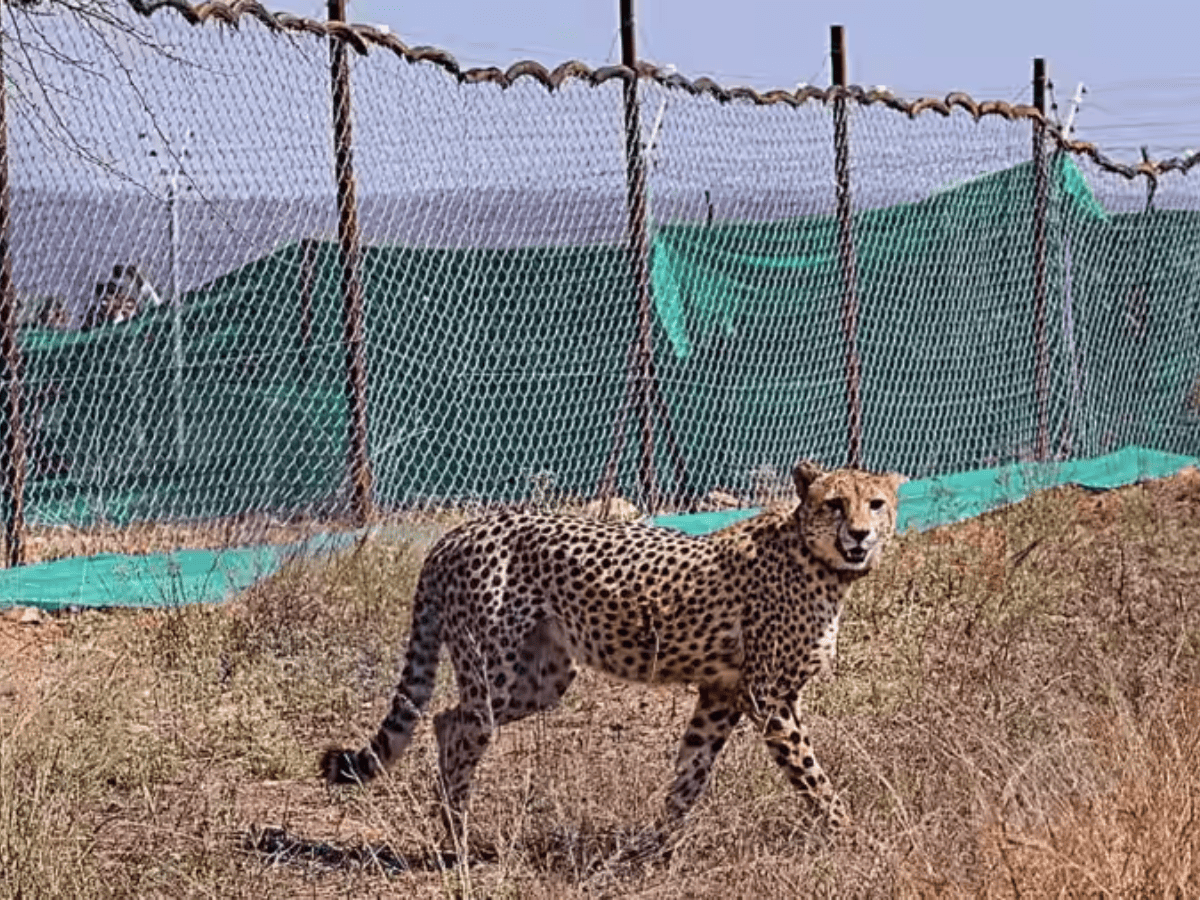
The highly publicised programme to introduce African cheetahs to an Indian habitat has hit a stumbling block and the project is faltering. Going by the Modi government’s own milestones, the minimum target for short term success of the plan is the survival of at least 50 percent of the cheetahs in the first year. But with nine of the animals having died already, the plan is tottering on the brink of a colossal failure.
The issue has snowballed into a major controversy. Recently Justice Narasimha of the Supreme Court of India told the Additional Solicitor General Aishwarya Bhati, representing the Union Ministry of Environment, Forests and Climate Change (MoEFCC), that the court was very concerned about the deaths of the animals that were translocated.
Serious questions have been raised by many wildlife experts about the way the scheme was envisaged and implemented. Joseph Hoover, a former member of the Wildlife Board in Karnataka and a well known wildlife activist is dismayed at the blunders that have been made and are continuing to be made even now.
“One has to keep in mind that these animals have been brought to India from conservation centres in Namibia and South Africa. Has anyone asked why they were lodged in conservation centres? Obviously because they were injured earlier or were ill,” explained Joseph Hoover.
“Besides, they are used to the habitat in their own countries. Their natural environment is that of savannah grasslands where they can chase after prey because they have a clear running path. They run at such high speeds that they cannot chase in surroundings where there are trees and bushes,” explained Joseph.
“The entire project was conceived without taking into consideration many important factors. The Kuno National Park and sanctuary in Madhya Pradesh does not give the cheetahs an environment that is in keeping with their natural lifestyle,” he said.
“In India we do not have the experts who can handle such a scheme with the precision that is needed. Besides, cheetahs have never survived in India even on earlier occasions when attempts were made to keep them in India. In the zoos in Mysore and Hyderabad they did not survive,” he said.
“More than seventy crore have been sunk into this programme which could have been better used elsewhere. We have already lost nine cheetahs including three out of the four cubs that were born in India. It looks like the poor animals were brought here just to make them die,” lamented Joseph.
“Now attempts are being made to find excuses and pinpoint scapegoats. The services of the experienced conservationist and scientist Y.V. Jhala to the Wildlife Institute of India, was unexpectedly terminated. Thereby his knowledge of dealing with cheetahs for more than a decade has been thrown away,” he said.
“Nowadays we hear that the radio collars that have been placed around the necks of the animals are interfering with the winter coats that they are beginning to develop. The collars have caused abrasions and this led to infections. Why was this not anticipated?” questioned Joseph Hoover.
“It is a well known fact that cheetahs and other wild animals develop a winter coating of fur to enable them to withstand harsh winters in their native lands. But in Kuno the climate is still hot and humid. Didn’t the people who planned this project know about this? So, from the very beginning, the cheetah project has been handled with very little thought and foresight. It is a story of misjudgement and botch-ups for which the animals are paying a heavy price,” said Joseph.
A few weeks ago experts from Namibia and South Africa who were members of the national cheetah project’s steering committee wrote to the Supreme Court of India to express their anguish at being kept in the dark over the methods that were being adopted to take care of the cheetahs. It is clear that this project which was launched with great fanfare by the Modi government has now made us cut a sorry figure in the field of wildlife conservation.



